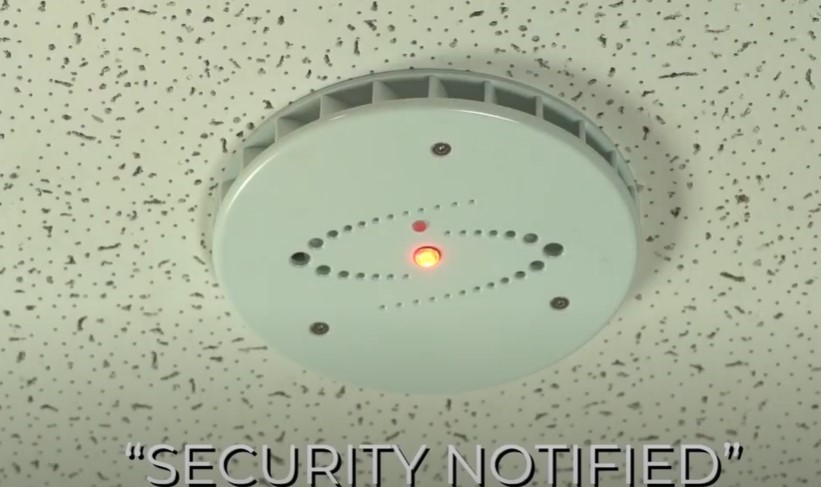With the rise of vaping among teenagers and young adults, institutions like schools, offices, and healthcare facilities are taking steps to monitor and control unauthorized vape use. One increasingly popular solution is the use of vape detectors—specialized devices that can sense vapor in the air. These detectors are designed to identify when someone is using devices like the Tornado Vape, a popular and discreet vaping product often used in places where smoking is prohibited.
So how do these detectors identify vaping when it’s often invisible to the naked eye and scentless? In this article, we’ll break down how vape detectors work, where they’re used, and how they help tackle the issue of indoor vaping.
What Is a Vape Detector?
A vape detector is an electronic sensor-based device that identifies the presence of airborne particles and chemicals produced by e-cigarettes and vape pens. Unlike traditional smoke detectors, which only detect combustion-based smoke, vape detectors are tuned to recognize vapor aerosols and compounds commonly found in e-liquids.
These detectors are especially valuable in locations where surveillance isn’t practical or legal—like school bathrooms or locker rooms—and where users of discreet devices such as Tornado Vape can otherwise go unnoticed.
How Do Vape Detectors Work?
1. Detection of Particulate Matter and Aerosols
The vapor produced by devices like the Tornado Vape contains tiny aerosolized particles made of substances such as propylene glycol, vegetable glycerin, nicotine, and flavorings. Vape detectors use Particulate Matter (PM) sensors to identify these particles.
These sensors monitor changes in air quality and look for the specific particle size and concentration that match typical vape clouds. Since vaping doesn’t produce traditional smoke, these sensors must be much more sensitive than those used in standard smoke detectors.
2. Chemical Analysis via VOC Sensors
Another key component of a vape detector is its Volatile Organic Compounds (VOC) sensor. Vaping releases specific VOCs that can be distinguished from other airborne chemicals like perfumes or cleaning agents.
By measuring the concentration of certain gases and chemical residues in the air, these sensors can detect whether a device such as the Tornado Vape has recently been used. This is particularly useful in small or enclosed spaces where vapor tends to linger.
3. Environmental Sensors: Humidity and Temperature
Vaping causes short-term changes in a room’s humidity and temperature levels. Some detectors integrate sensors to monitor these environmental shifts, which can help confirm a vape event when combined with particle and chemical data.
This multi-sensor approach increases accuracy and reduces false positives.
4. Data Processing and Alerts
When a vape event is detected, the device uses onboard algorithms to analyze the data. If thresholds are exceeded—suggesting that someone has used a vape like the Tornado Vape—the detector will trigger an alert.
Alerts can take different forms:
- Audible alarms
- Real-time notifications via mobile apps
- Text or email alerts to administrators
- Dashboard updates for centralized monitoring
In environments like schools, this allows staff to intervene immediately without requiring cameras or physical supervision.
The Role of Machine Learning in Vape Detection
Some modern vape detectors use machine learning to refine detection over time. These algorithms learn to distinguish between actual vape use and other environmental factors—like steam from a shower or aerosol sprays—that might otherwise cause false alarms.
This is especially helpful when dealing with high-tech, low-odor vape products like the Tornado Vape, which are engineered to be discreet and hard to detect.
Where Are Vape Detectors Installed?
1. Educational Institutions
Middle schools, high schools, and even some colleges are deploying vape detectors in bathrooms, locker rooms, and hallways to deter student vaping. Devices like the Tornado Vape are compact and easy to conceal, making them a particular challenge in educational settings.
Installing detectors allows staff to track vaping patterns, reduce repeat offenses, and protect students’ health.
2. Workplaces and Offices
Vaping indoors is often against company policy, but enforcing those rules can be difficult. Detectors installed in restrooms, break rooms, and lounges help ensure compliance without compromising employee privacy.
3. Healthcare Facilities
Hospitals and clinics must maintain strict air quality standards. Vape detectors help ensure that neither patients nor staff are exposing others to nicotine or chemical vapors—whether intentionally or not.
4. Public Spaces
Malls, airports, libraries, gyms, and public restrooms are seeing increased adoption of vape detectors. As products like the Tornado Vape become more accessible, public facilities are turning to technology to enforce no-vaping zones discreetly and effectively.
Do Vape Detectors Invade Privacy?
One major concern is whether vape detectors are intrusive. The good news: vape detectors do not use cameras or microphones. They are designed to detect air quality changes only. This makes them a preferred solution in sensitive environments like school restrooms or changing rooms, where video surveillance would be a privacy violation.
In short, they focus on environmental monitoring—ensuring that people aren’t exposed to the harmful effects of vapor, without compromising anyone’s privacy.
Challenges and Limitations
1. False Positives
Although advanced vape detectors are highly accurate, there’s still the possibility of false positives due to steam, deodorant sprays, or even incense. Devices using machine learning help reduce these incidents but aren’t perfect.
2. Cost and Installation
Installing vape detectors—especially across an entire school or facility—can be costly. However, this is usually seen as a worthwhile investment for long-term safety and enforcement.
3. Adapting to New Devices
Vape devices like Tornado Vape are constantly evolving to produce less visible vapor and scent. This makes it crucial for vape detection systems to stay updated and adapt to new vaping technologies.
Conclusion
Vape detectors are a powerful response to the increasing use of discreet vape devices like the Tornado Vape, especially in vape-free zones. By combining advanced sensors with intelligent algorithms, these detectors provide real-time alerts, enhance compliance, and promote healthier environments—without invading privacy.
As vaping technology evolves, so must detection technology. Institutions looking to stay ahead of the curve should consider implementing vape detection systems not only to enforce rules but to protect the well-being of those within their facilities.

